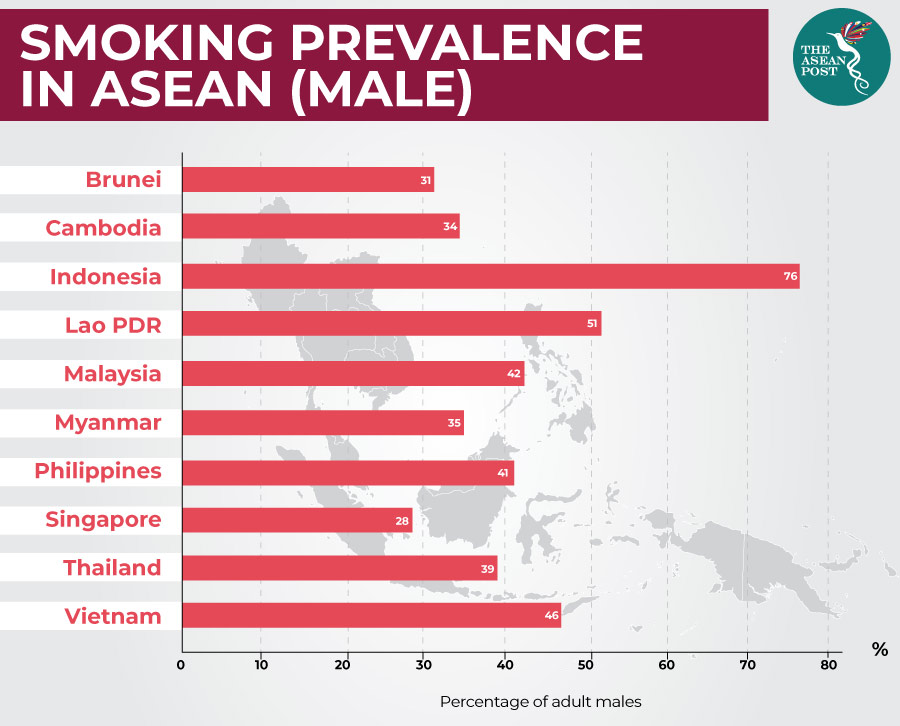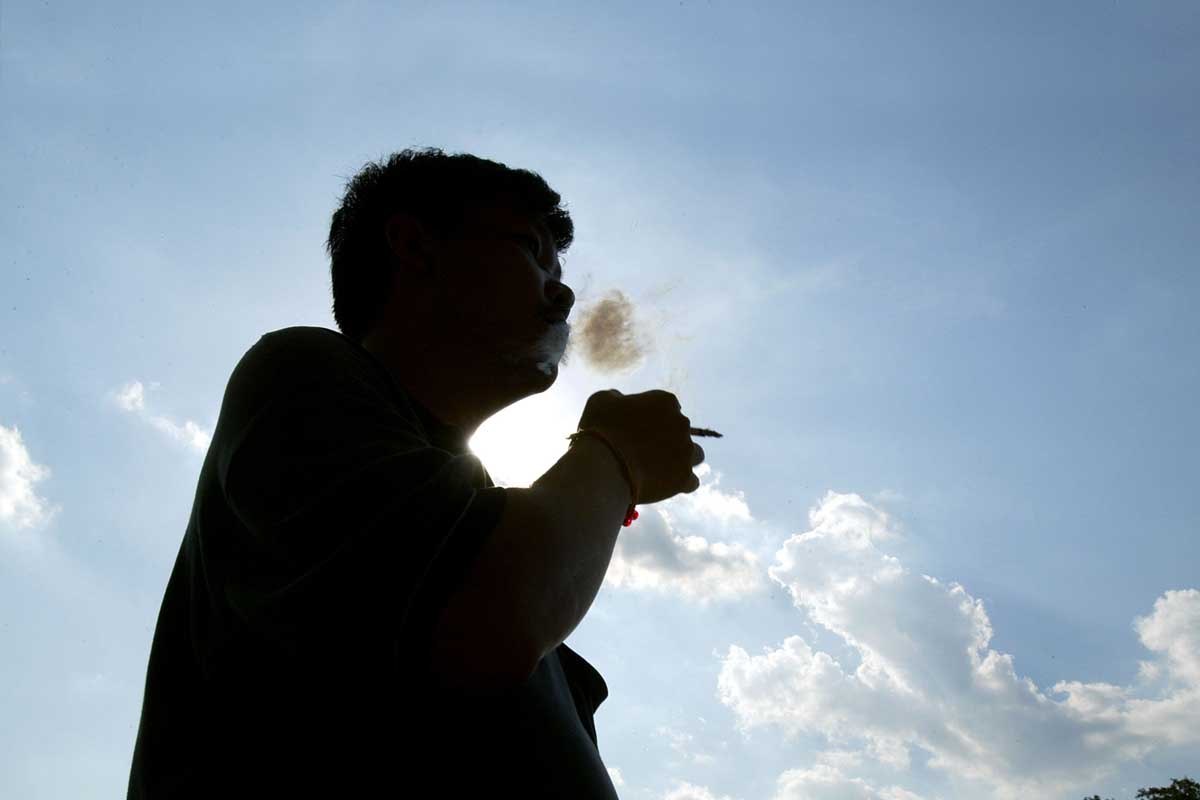Malaysia has become the latest ASEAN member state to establish more smoke-free zones; rolling out a divisive smoking ban on 1 January which prohibits smoking in all restaurants, open-air eateries, coffee shops and hawker centres.
Those who smoke in these areas can now be fined RM10,000 (US$2,415) or jailed up to two years – though smokers can still light up three metres (10 feet) away from these establishments. Owners of eateries which allow their customers to puff as they please can be fined up to RM5,000 (US$1,210) or face jail time of up to one year, while the failure to display no-smoking signage will result in an additional fine not exceeding RM3,000 (US$725) or a jail sentence of up to six months.
In a bid to create more smoke-free environments, eateries join a list of 21 other areas already designated as no-smoking zones under Malaysia’s Control of Tobacco Product (Amendment) Regulations 2017 which include government buildings, airports, entertainment centres, theatres, elevators and other public spaces.
“It is pertinent that we ensure this is not only a temporary campaign but becomes our culture and way of life,” said Malaysia’s Health Minister, Dr. Dzulkefly Ahmad.
Bans across the region
With ASEAN countries long acknowledging the burden of smoking on public health and the potential loss of workforce productivity, governments in the region are gradually moving towards the creation of more no-smoking zones.
Last February, Thailand enforced a ban on smoking and littering of cigarette butts and packets across 24 beaches in 15 provinces. In November, the country also created 81 new no-smoking zones.
In Singapore – one of the first countries in the world to introduce tobacco control legislation in 1970 – its famed Orchard Road became smoke-free on 1 January. Smokers there who want to get their nicotine fix will now have to do so at 40 designated smoking areas (DSAs) along the 2.2-kilometre shopping strip.
In the Philippines – the second-largest tobacco consumer in Southeast Asia after Indonesia –President Rodrigo Duterte signed an executive order to ban smoking in all public places in 2018.
With one in every five ASEAN adults a smoker and the tobacco market selling an estimated 548 billion cigarettes in 2018 – primarily in Indonesia, the Philippines, Thailand, and Vietnam – it is easy to see why Southeast Asian countries are stepping up their battle against tobacco, especially since smoking bans have wide-reaching benefits.
According to Alex Cook from the Saw Swee Hock School of Public Health at the National University of Singapore, there is clear evidence linking smoking bans to improved cardiovascular health outcomes, fewer deaths from smoking related illnesses and the denormalisation of tobacco use.

The World Health Organization (WHO) estimates around seven million fatalities worldwide related to smoking each year; of which six million are smokers while 890,000 are non-smokers who were exposed to second-hand smoke.
Southeast Asia alone accounts for 10 percent of the world’s smokers – with the addiction claiming the lives of 500,000 people here every year.
On the rise
WHO research in 2016 shows that ASEAN countries have among the world’s highest smoking rates – with Indonesian men topping the list with 76 percent of the population. Lao PDR comes in second with 51 percent, followed by Vietnam (46 percent), Malaysia (42 percent) and the Philippines (41 percent). Singapore, which has one of the strongest tobacco control laws in the world, has the lowest male smoking percentage in the region at 28 percent.
The percentage of men who smoke globally dropped from 38 percent in 2010 to 35 percent in 2016 – which leads to the question of why is the smoking rate so high in ASEAN?
Reasons for this include increasingly powerful transnational tobacco companies, cheaper cigarette prices, a rampant black market and unenforced no-smoking laws. However, with more countries painting tobacco use as a socially unacceptable and undesirable activity, the time is right for smokers in ASEAN nations to start quitting.
ASEAN nations could take a leaf out of Singapore’s book and increase the price of tobacco products, eliminate exposure to second-hand smoke and introduce plain or standardised packaging and large graphic health warnings on all tobacco product packaging. Stricter bans on tobacco advertising and increased campaigns to educate the public about the harms of smoking are among other steps Singapore has taken to create a smoke-free country in line with international best practices.
With the World Bank stating in 2017 that the total economic cost of smoking was estimated to exceed US$1.4 trillion per year, the Southeast Asia Tobacco Control Alliance (SEATCA) stressed that tobacco control is crucial in meeting the United Nations’ (UN) Sustainable Development Goals (SDGs).
“Tobacco negatively affects many of the 17 SDGs, so tobacco control is essential for sustainable development,” said SEATCA executive director Dr. Ulysses Dorotheo during the 12th Asia-Pacific Conference on Tobacco or Health in Bali last year.
“The inclusion of WHO’s Framework Convention on Tobacco Control (FCTC) implementation as a key target for the health goal recognises the magnitude of the smoking epidemic. SDGs cannot be achieved without a strong commitment to tobacco control,” he added.
Having signed the FCTC in 2005, this year’s ban strengthens Malaysia’s commitment as a member of the convention and adherence to its Article 8 (Protection from exposure to tobacco smoke).
Despite the resistance from smokers and eatery owners, Malaysia is not budging on the ban – showing that it is indeed serious in achieving its target of becoming a smoke-free nation by 2045.
With proper enforcement and more aggressive tobacco control measures, Malaysia – and the rest of ASEAN – would be well on their way to eliminating smoking, the world’s largest cause of preventable deaths.
Related articles:
Tobacco’s murder streak continues
